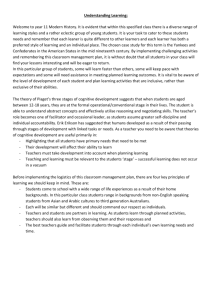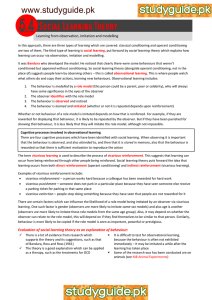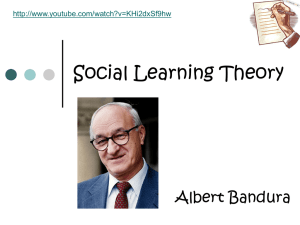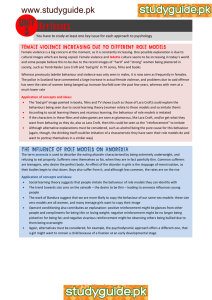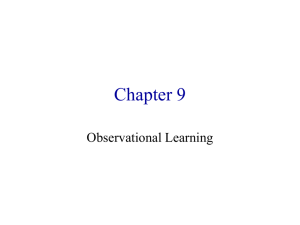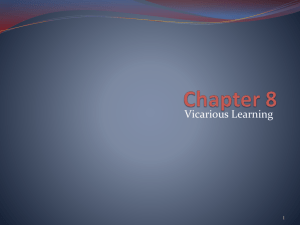ELEMENTS OF OBSERVATIONAL LEARNING
advertisement
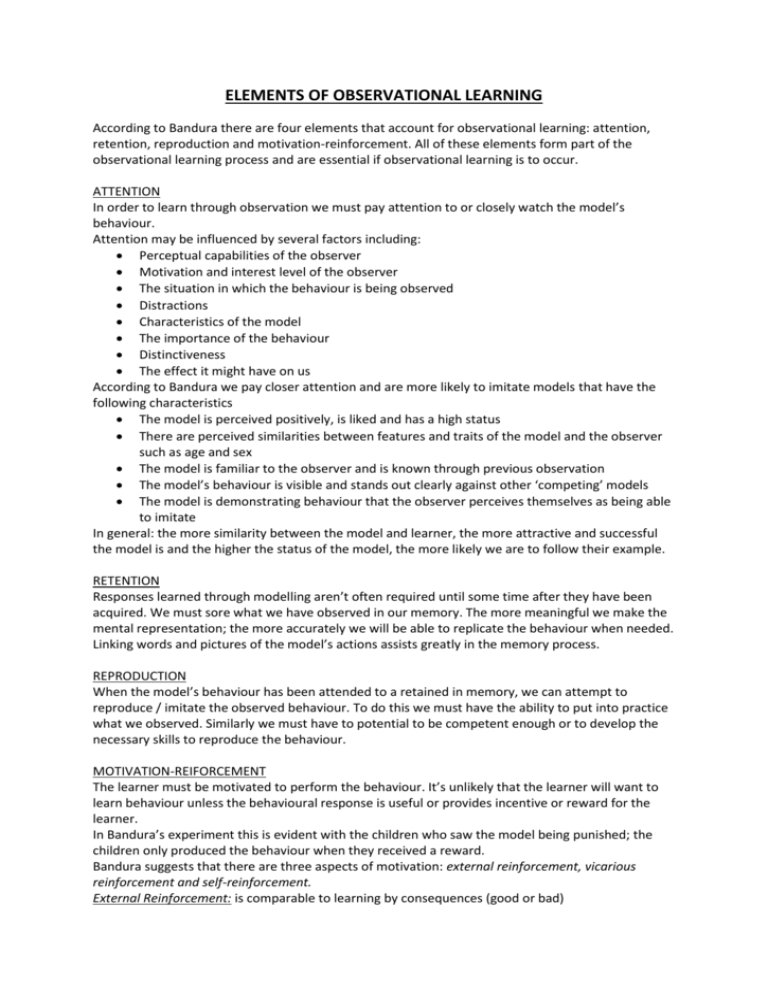
ELEMENTS OF OBSERVATIONAL LEARNING According to Bandura there are four elements that account for observational learning: attention, retention, reproduction and motivation-reinforcement. All of these elements form part of the observational learning process and are essential if observational learning is to occur. ATTENTION In order to learn through observation we must pay attention to or closely watch the model’s behaviour. Attention may be influenced by several factors including: Perceptual capabilities of the observer Motivation and interest level of the observer The situation in which the behaviour is being observed Distractions Characteristics of the model The importance of the behaviour Distinctiveness The effect it might have on us According to Bandura we pay closer attention and are more likely to imitate models that have the following characteristics The model is perceived positively, is liked and has a high status There are perceived similarities between features and traits of the model and the observer such as age and sex The model is familiar to the observer and is known through previous observation The model’s behaviour is visible and stands out clearly against other ‘competing’ models The model is demonstrating behaviour that the observer perceives themselves as being able to imitate In general: the more similarity between the model and learner, the more attractive and successful the model is and the higher the status of the model, the more likely we are to follow their example. RETENTION Responses learned through modelling aren’t often required until some time after they have been acquired. We must sore what we have observed in our memory. The more meaningful we make the mental representation; the more accurately we will be able to replicate the behaviour when needed. Linking words and pictures of the model’s actions assists greatly in the memory process. REPRODUCTION When the model’s behaviour has been attended to a retained in memory, we can attempt to reproduce / imitate the observed behaviour. To do this we must have the ability to put into practice what we observed. Similarly we must have to potential to be competent enough or to develop the necessary skills to reproduce the behaviour. MOTIVATION-REIFORCEMENT The learner must be motivated to perform the behaviour. It’s unlikely that the learner will want to learn behaviour unless the behavioural response is useful or provides incentive or reward for the learner. In Bandura’s experiment this is evident with the children who saw the model being punished; the children only produced the behaviour when they received a reward. Bandura suggests that there are three aspects of motivation: external reinforcement, vicarious reinforcement and self-reinforcement. External Reinforcement: is comparable to learning by consequences (good or bad) Vicarious Reinforcement: is observing the modelled behaviour being reinforced for other people. Self Reinforcement: occurs when we are reinforced by meeting certain standards of performance we set ourselves.
